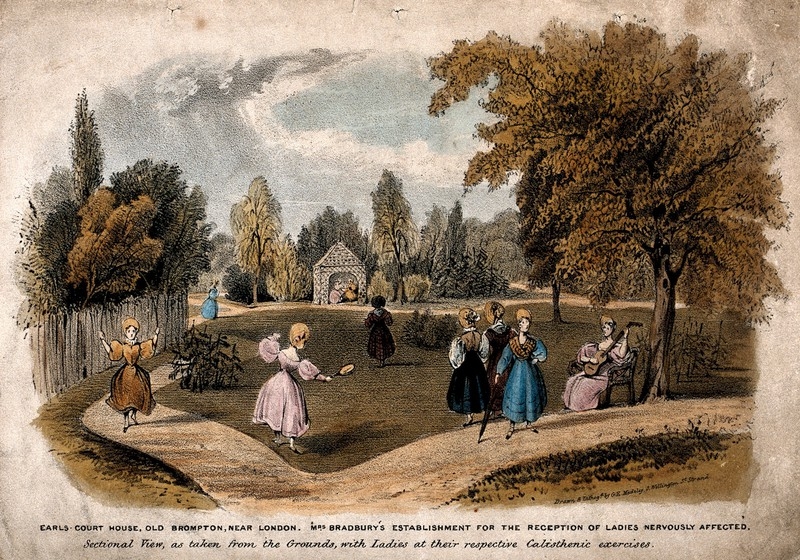In the late 19th and early 20th centuries, doctors believed that modern civilisation itself was making people sick. What with steam-powered trains, telegraphs and daily newspapers, modern life was just too fast-paced for people’s health to bear. The result? Neurasthenia, a disease of overtaxed nerves that was believed to afflict the high-status ‘brain-workers’ of society’s upper crust.
When civilisation made people sick
Words by Amelia Soth
- In pictures
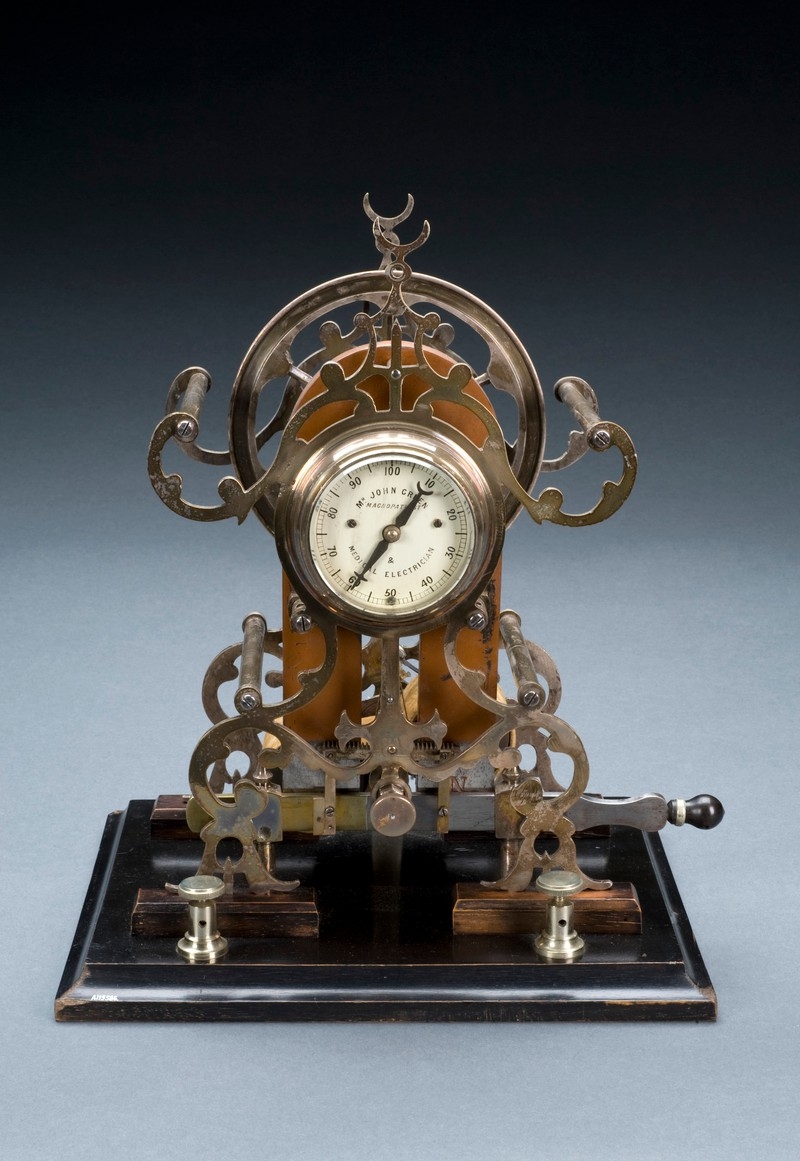
According to George Miller Beard, who popularised the neurasthenia diagnosis, the neurasthenic’s body was like a spent battery, bereft of ‘nervous energy’ – and just like a battery, it could be recharged. Electrotherapy devices, like this one, were used to re-energise the nerves and zap the body back into health.
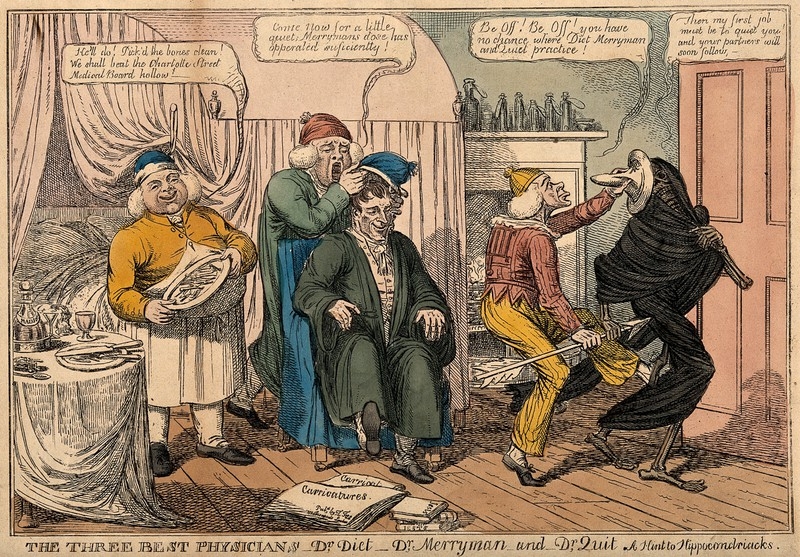
If electrotherapy sounds too shocking, you could opt for the rest cure, developed by Dr Silas Weir Mitchell. Personified here by “Dr Diet, Dr Quiet, and Dr Merryman”, the ‘rest cure’ was meant to cure neurasthenia by slowly rebuilding the patient’s will, while isolating them from social connection and work obligations.
The rest cure was not always as relaxing as it may sound. Female neurasthenic patients in particular were often confined to a single room for weeks on end. Take it from Charlotte Perkins Gilman, who was inspired to write the feminist classic ‘The Yellow Wallpaper’ after a nightmarish experience with Dr Mitchell’s rest cure.
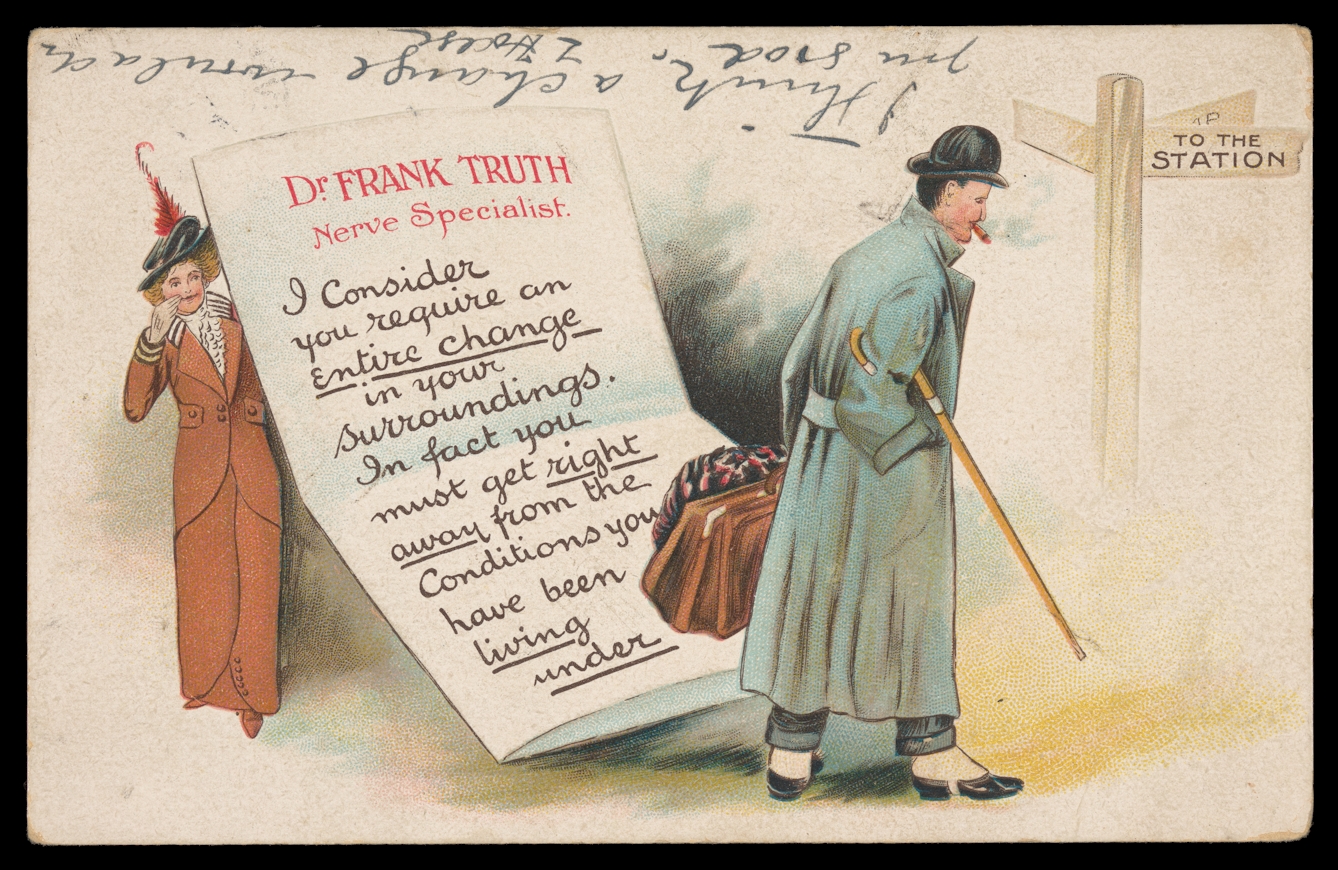
While women were subjected to the stultifying ‘rest cure’, men were often encouraged to venture on the ‘West cure’, leaving their urban lives to go rough-riding and cattle-chasing in the American West. Theodore Roosevelt, once called an “American Oscar Wilde”, developed his macho outdoorsman persona during a West cure.

There was some prestige in being diagnosed with a disease that was believed to affect the intelligent and hard-working, and neurasthenia had plenty of celebrity sufferers. But the popularity of the diagnosis led to a predictable backlash: some considered it a mere fashionable affliction of society women who were “just well enough to go to the opera and the play; just sick enough not to go to church”.
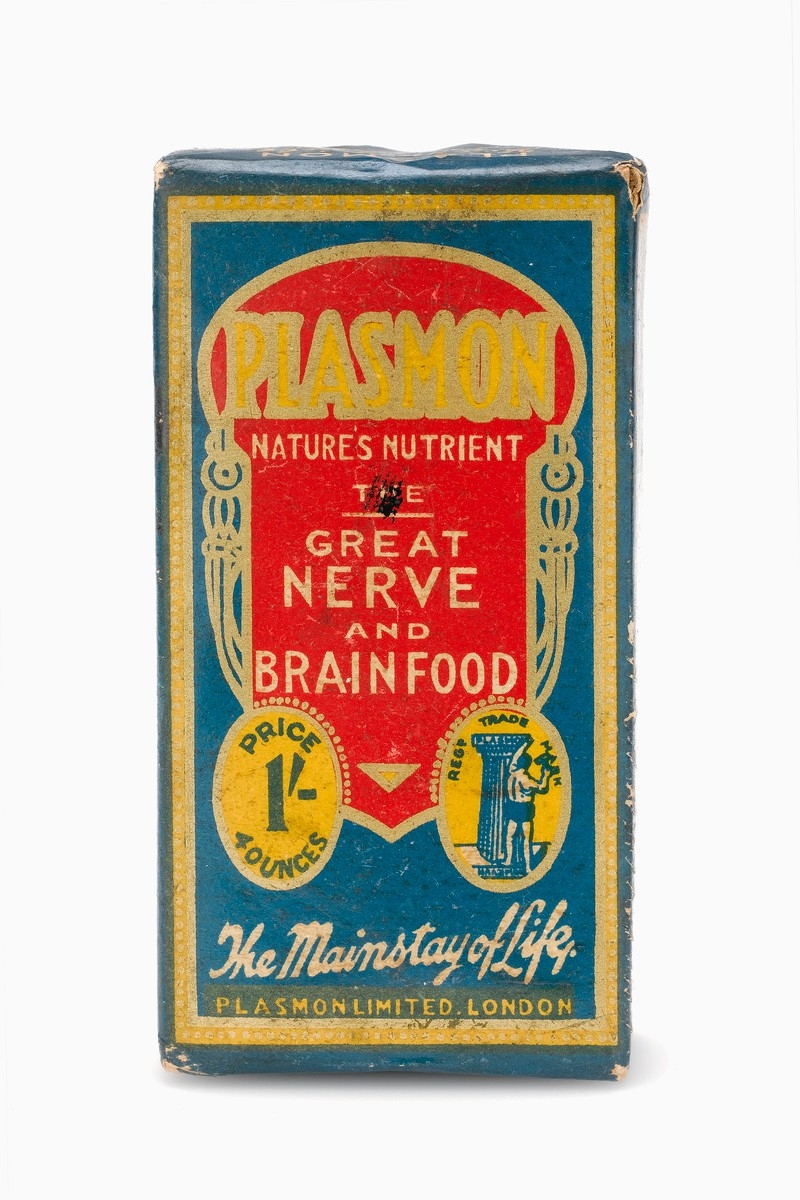
As neurasthenia entered the public consciousness, patent medicine manufacturers quickly seized on the diagnosis as a convenient marketing tool. In the hope of encouraging consumers to self-diagnose, patent medicine companies distributed free educational pamphlets emphasising the vaguest and broadest of symptoms: fatigue, worry, apathy, discontentedness.
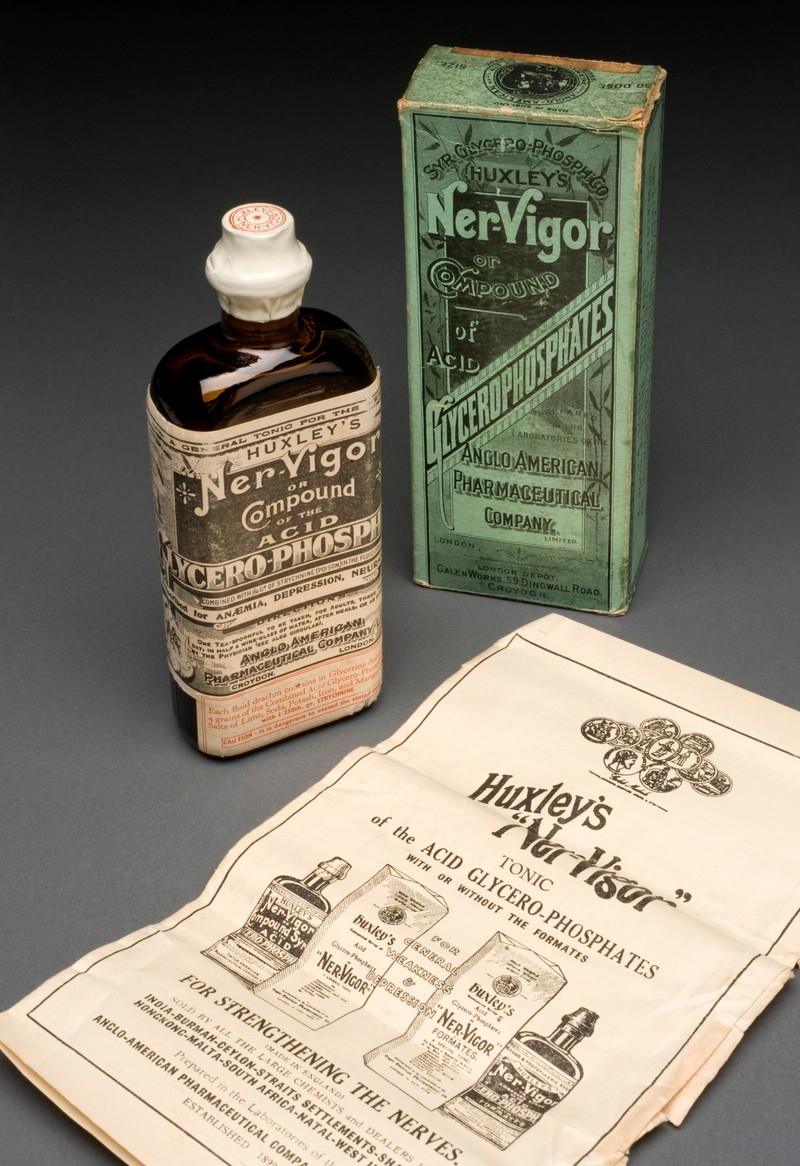
Some patent medicines, like the bottle of Huxley’s Ner-Vigor shown here, were laced with strychnine. Others guaranteed repeat customers with the addition of addictive ingredients like opium and cocaine.
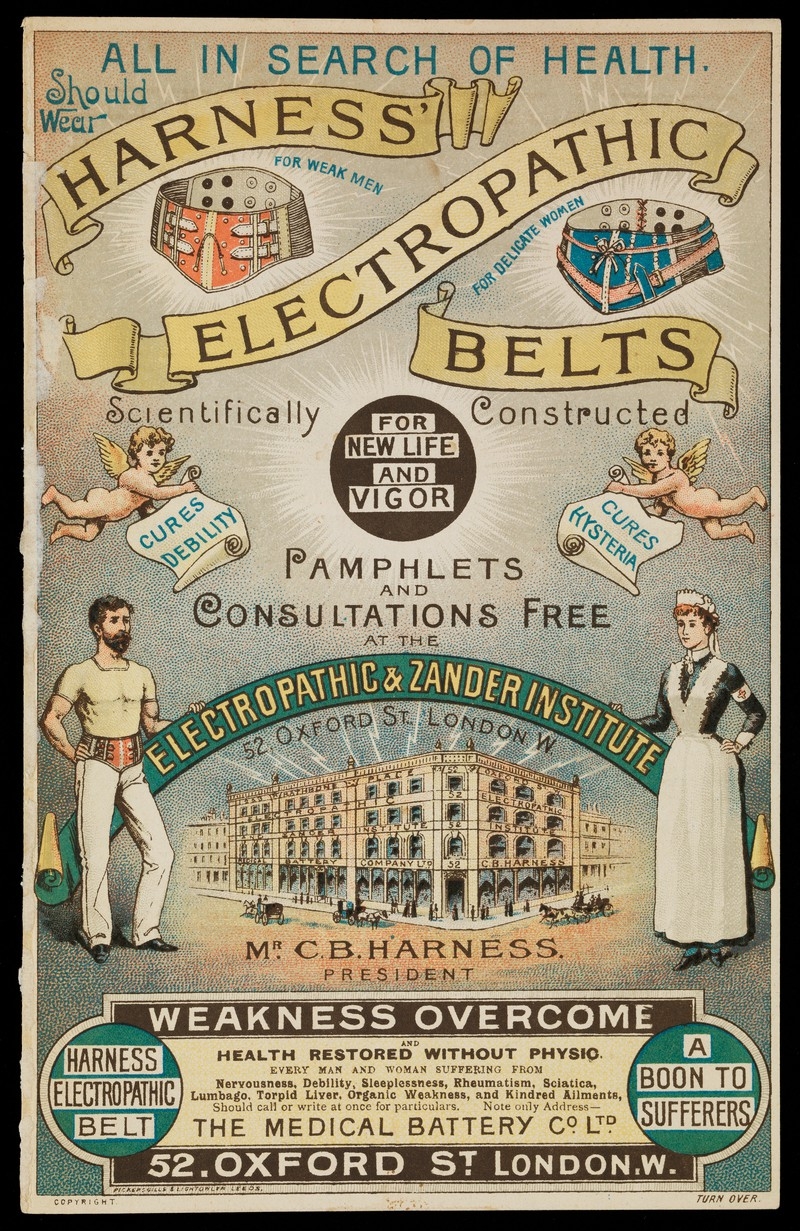
The electrotherapy cure was brought into the home with electropathic belts like those advertised here. Simply strap yourself in and zap away! Some belts even offered $2 ‘family attachments’ that could be used to recharge the consumer’s unmentionables.
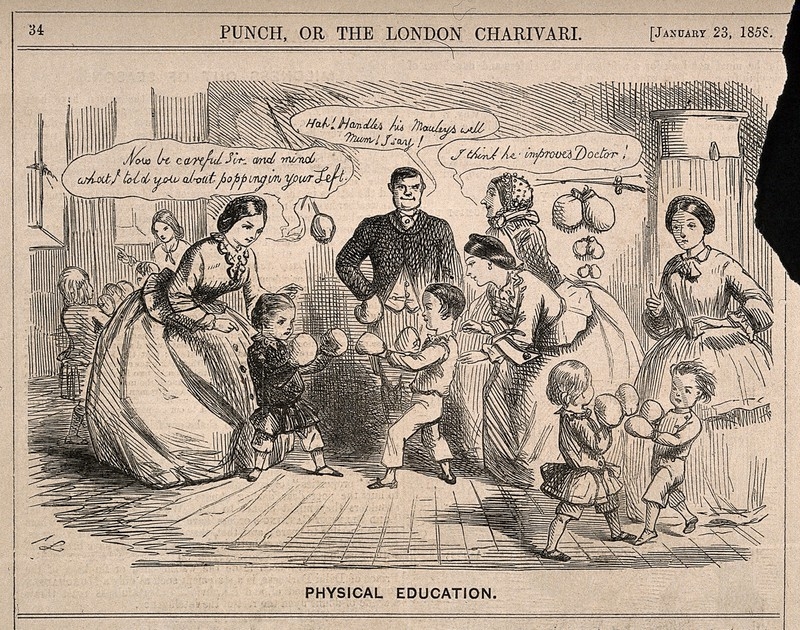
Because neurasthenia was believed to be caused by excessive ‘brain-work’, reformers became concerned that schoolchildren were at risk of developing the disorder. Physical education classes were introduced to schools in order to encourage children to build up strong bodies that could withstand the strain on their nerves.
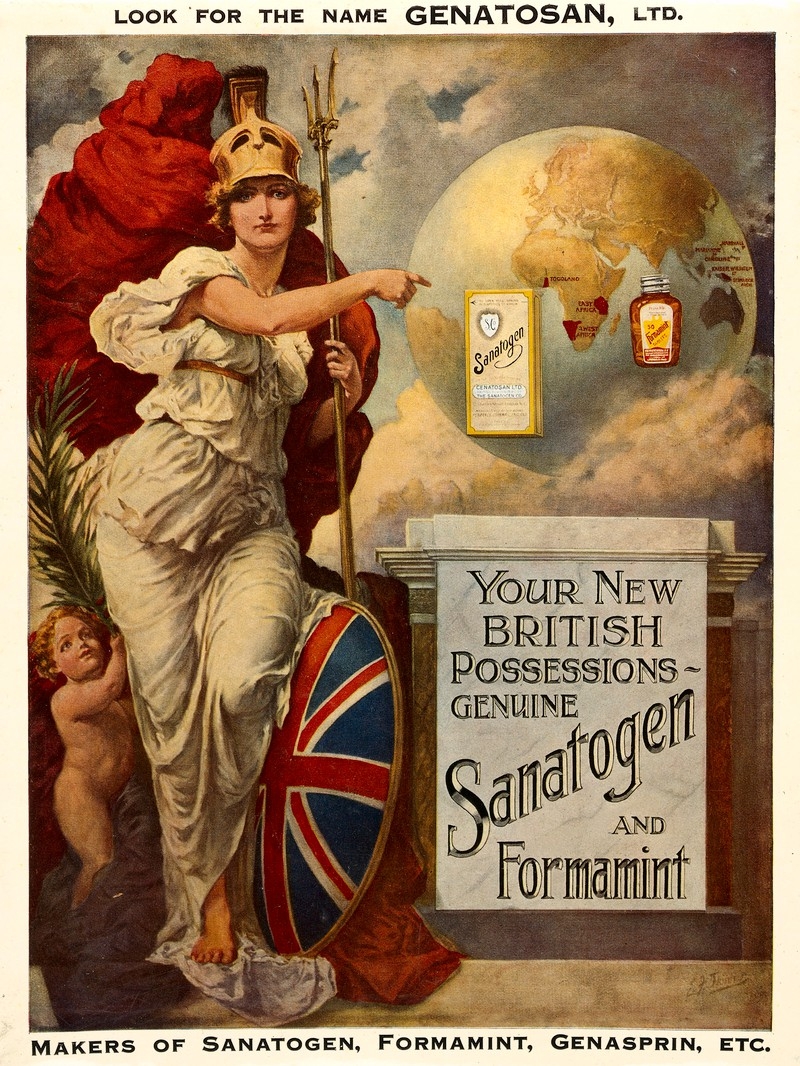
As psychology rose to the fore in the 1920s, the neurasthenia diagnosis began to fade away in America and Europe. Meanwhile, the drug company Sanatogen launched an immensely successful advertising campaign that imported the neurasthenia diagnosis to China. Dr Beard’s ‘nervous energy’ translated well into the traditional Chinese medicine concept of qi. As the Communist Revolution swept through China in 1949, neurasthenia once again became a way for people to express their anxiety, dissatisfaction and fatigue in the face of social upheaval.
About the author
Amelia Soth
Amelia lives in Chicago and writes the column ‘Cabinet of Curiosities’ for JSTOR Daily.
